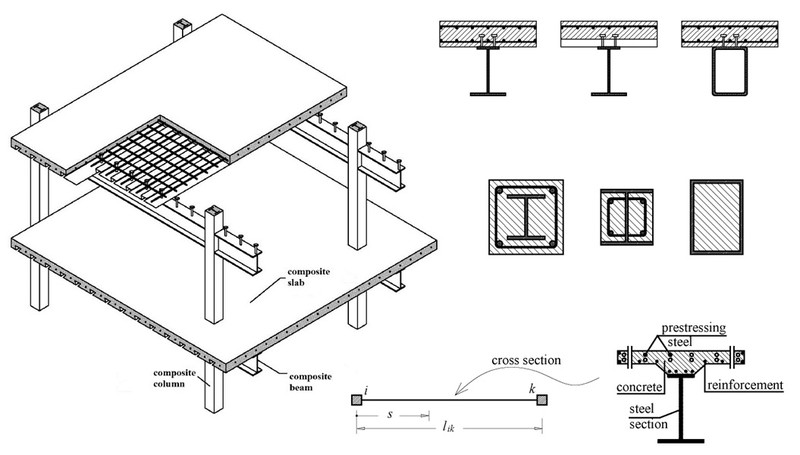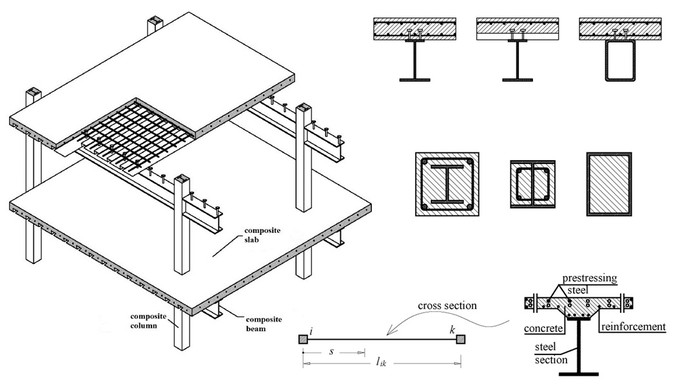The term “steel-concrete composite structure” implies the use of steel and concrete members together into a single item. The aim is to achieve a higher level of performance than would have been the case when the two members function separately. Although very different in nature, concrete and steel complement one another: concrete is efficient in compression and steel in tension; steel components are prone to buckling while concrete can restrain and postpone buckling; concrete gives protection against corrosion and provides thermal insulation; steel gives ductility to the structure.
Behavior of composite girders, generally, is highly nonlinear because of nonlinear behavior of each structural part: steel section, reinforced concrete slab and shear connectors. Consequently, the analysis of composite structures is complex and requires the nonlinear analysis and appropriate computer software.
In these structures, it is very important to take into account viscous effects because of viscous deformations of concrete (creep and shrinkage). Research in the topic “Analysis of Steel-Concrete Composite Structures” involves development of new numerical models and comparison with existing numerical models for taking into account these effects. As a new approach, the analysis of composite and prestressed beams is presented using the mathematical operators. Applying the linear integral operators, the solution to the problem can be derived without introducing additional mathematical approximations and simplifications, besides the inevitable approximations related to the rheological properties of constitute materials, i.e. steel, concrete, prestressing steel and reinforcement. The derived relations apply with any concrete creep functions and for the element with a variable cross section.
In addition, an important part of the work is devoted to development of advanced numerical methods that are in accordance with the Eurocode 4 design guide and that can be used in specific cases when assumptions of the “standard” and simple methods are not fulfilled. These include, besides analysis of time-dependent behavior, nonlinear section analysis, behavior of beams with ductile/nonductile shear connectors, etc. Each of the studied problems is analyzed using own computer programs.

